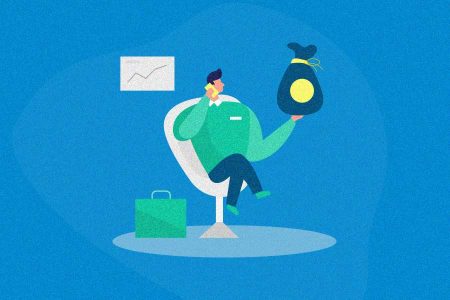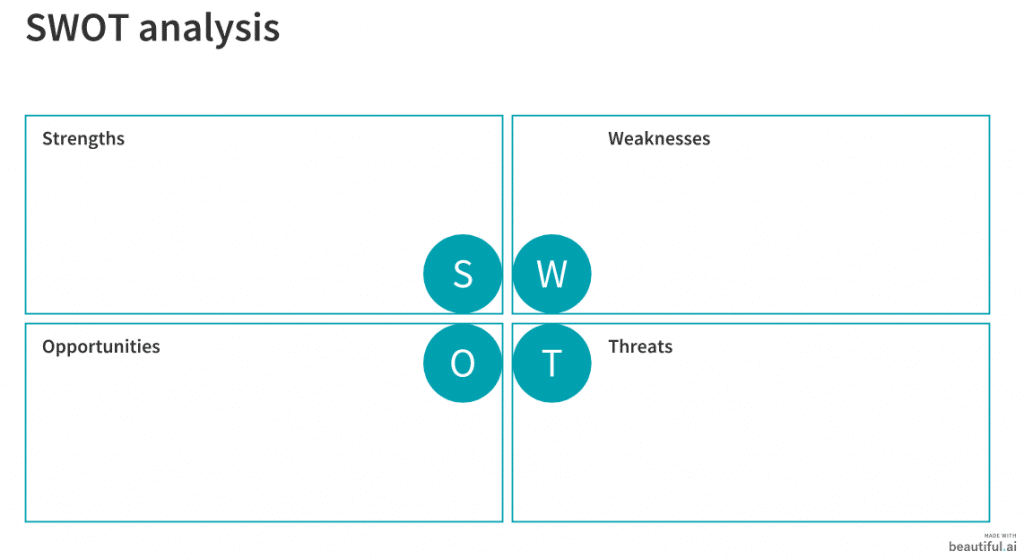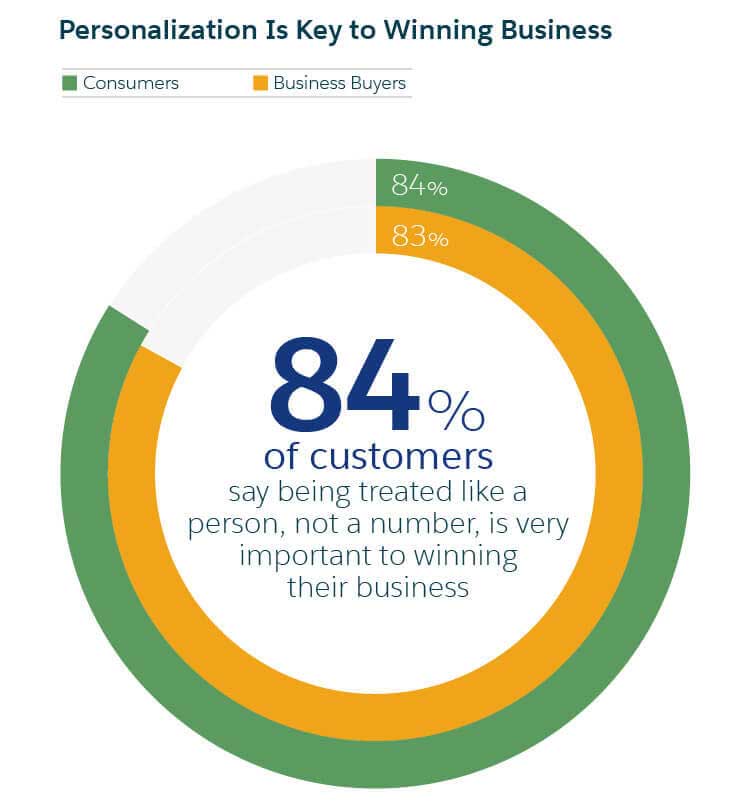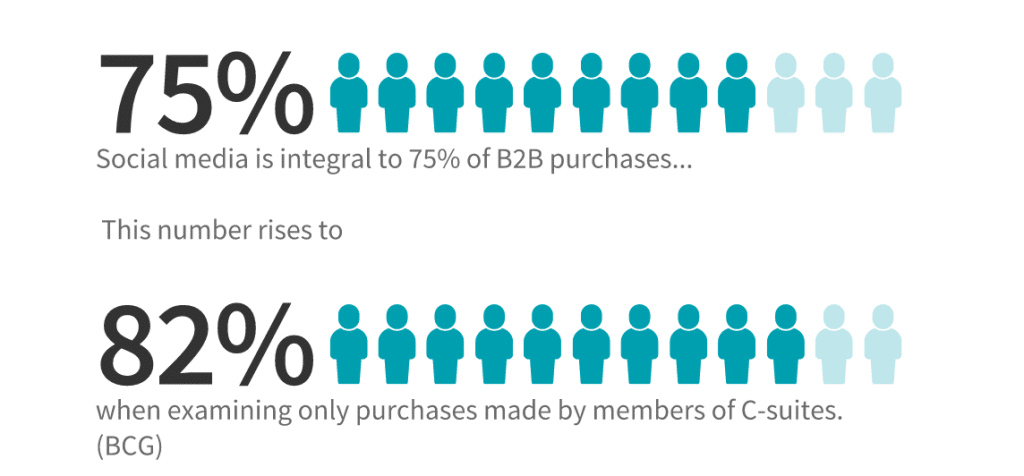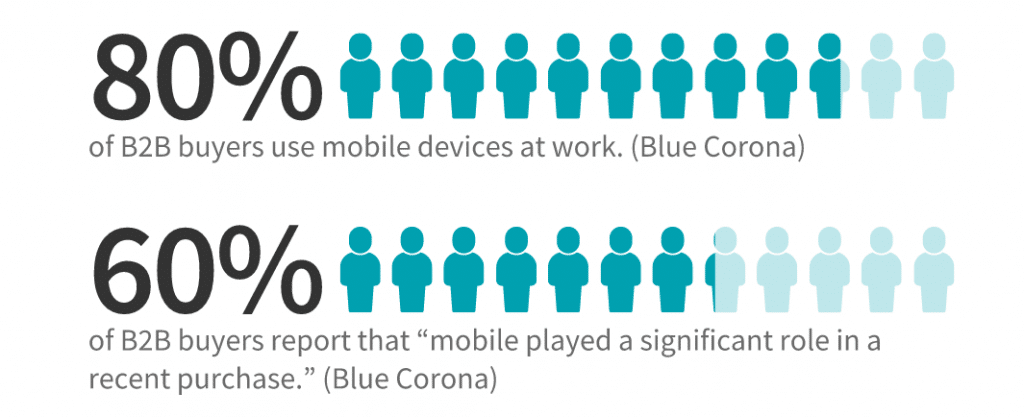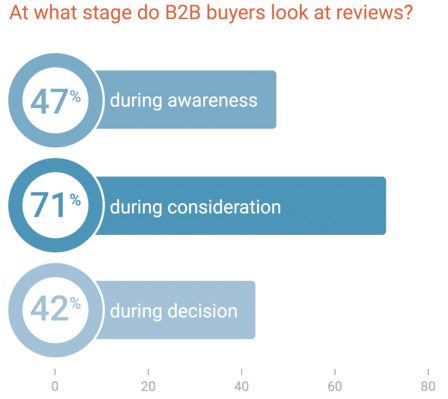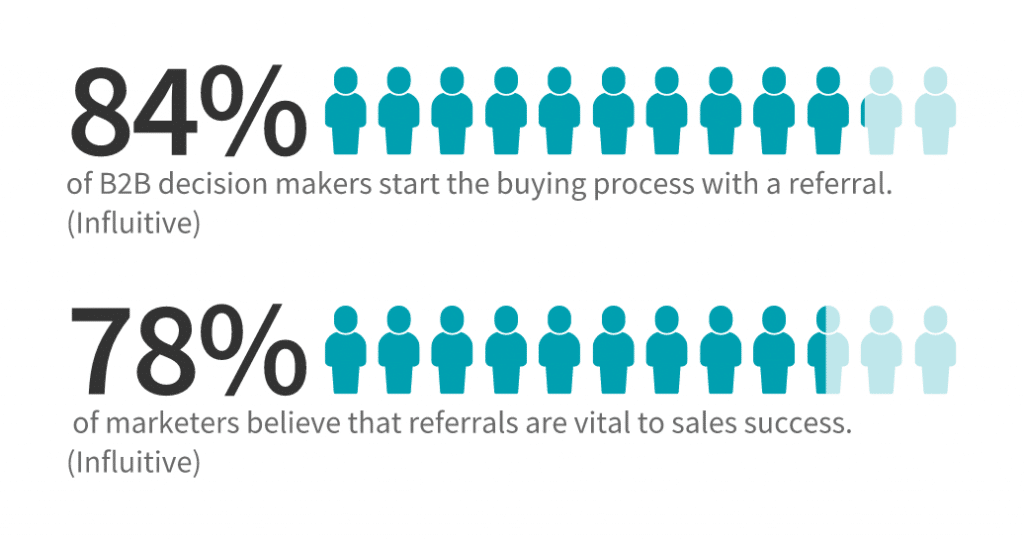Whether it’s for a B2B or B2C business, marketing is all about generating, securing, and converting leads. However, if you’re a B2B marketer, you’ll need to utilize specific B2B marketing strategies – a different assortment of marketing strategies than those employed by B2Cs.
And the B2B purchasing landscape isn’t just distinct from B2C. It has evolved from the traditional B2B buying process, which the seller initiated and controlled.
Today’s B2B buying is increasingly digital. Buyers are more prepared when they first talk to salespeople, there are more people involved in a single decision, and these stakeholders have high demands for the customer experience. In a nutshell, the buyer is now initiating the process, and they hold much more power.
The modern B2B marketing landscape
You’ll need to make sure the strategies you utilize reflect these key elements of the modern B2B purchasing landscape, mainly the modern B2B “funnel” or buyer’s journey.
The new B2B funnel
The B2B marketing funnel has become less like a funnel and more like a looping roller coaster ride. This is because buyers often repeat actions in their journey towards a purchase, especially during their research phase. CMO by Adobe reports that 9 out of 10 B2B buyers redo at least one task within the purchasing funnel.
WebFX outlines the new B2B buyer’s journey, which includes looping steps and crucial post-purchase elements.
Remember the stages of the modern buyer’s journey as you design your strategies:
- Awareness: Buyers first gain knowledge of certain products or services. This often happens when they ask a question or seek a solution to a problem.
- Consideration: Multiple buyers perform extensive research, looping around from task to task as they compare options, and repeatedly consulting each other. The first conversations with sales representatives happen later in the consideration stage.
- Purchase: Buyers are convinced and converted, but the journey doesn’t stop here. In a way, it’s just beginning.
- Post-Purchase: Buyers seek exceptional customer support and service. If they’re satisfied, they’ll continue to purchase from you (hence loyalty being illustrated as a loop).
You’ll need different types of strategies for each stage. Strategies can be divided into three categories (although many fit into more than one category, or even cover all three):
- Demand generation: Demand generation strategies inform and create interest in your product or service. These strategies illuminate problems buyers have and show how you have the solution to their needs, through the features you offer. They create brand awareness and have the goal of placing your brand on a “consideration” list. By finding out more on what is demand generation you can hone in your main focuses and learn how it can help your business grow.
- Lead generation/conversion: B2B lead generation strategies mobilize buyers in the consideration phase and motivate them to take action: submit their contact information, schedule a call with a representative, and ultimately make a purchase. Be sure to use B2B lead generation software to help you with your lead generation strategies.
- Retention and satisfaction: These post-purchase strategies are aimed at convincing customers to make repeat purchases. It’s all about that loyalty loop!
In addition to the new B2B buyer’s journey, there are many other evolving elements of the B2B landscape that you’ll need to consider when developing B2B marketing strategies. Here are the main elements to consider:
Increasingly digital, with younger buyers
Half of B2B decision-makers are under the age of 35. These younger stakeholders reject pushy sales pitches, like paid ads, cold calls, and any other way a business tries to bombard them with information. Instead, these digital natives are starting the process and researching what they want, when they want online (and they’re staying away from salespeople until they’re reasonably far along in their research).
They’re consulting the reviews and recommendations of others. And a company’s online presence – especially its website – is a make-or-break factor in these stakeholders’ decisions. The website acts as the first salesperson, so it must provide the information buyers seek as quickly as possible.
Extensive preliminary research
Thanks to the power of the internet, B2B buyers usually perform substantial research prior to having their first conversation with one of your representatives. They use multiple channels and multiple forms of media, including websites, social media, online videos, and peer reviews and recommendations.
Your average buyer is already 57% of the way through the purchasing process before they talk to someone on your team, and has performed 12 online searches before they even visit your website!
Offer a personalized buying experience
However, B2B buying does have some surprising similarities to B2C buying. B2B buyers seek personalization at all stages of the sales journey, in a similar vein to the B2C experience. They desire to know how a product or service will meet their distinct needs, seek detailed customer service and support across all channels, and want a customized experience throughout every part of the sales journey.
According to the SiriusDecisions Summit, as many as 80% of B2B buyers’ purchasing decisions are based on “direct or indirect customer experience,” while only 20% are based on the price or the actual product or service. And according to Instapage, 72% of B2B customers “expect a deep understanding of their needs, reflected through personalized experiences.”
Expect several decision-makers
B2Bs consult multiple stakeholders before making a purchase. And the number of decision-makers involved keeps increasing. The average amount of stakeholders involved in a B2B buying decision is 6–10, each coming in with their own distinct perspectives. And people outside the C-suite are becoming increasingly involved in the process.
Long, multi-step sales journey
B2B marketplaces usually go through a long decision-making process and a multistep sales journey, including demos and questioning periods, before making a purchase. The process is almost the exact opposite of the instant, B2C transaction process.
Large, long-term deals
B2Bs usually seek a deal that lasts for at least a few years, and that is worth a substantial amount. That directly contrasts with B2C buying, where one consumer quickly makes a short-term, low-stakes decision.
Given these elements of B2B buying, what strategies should you use for capturing and nurturing leads, driving conversions, and keeping your existing customers satisfied? Let’s dive into 14 effective B2B marketing strategies for your business, whether you are just starting a business or any stage beyond.
Know your audience
All the other B2B marketing strategies on this list won’t work if you haven’t clearly defined the audience you’re marketing to. But since there are several stakeholders involved in a B2B purchase, you’ll need to define several distinct personas—one for each common figure who will have a say in whether your product or service gets purchased.
When we say “defining personas,” we aren’t just talking about buyers’ demographics, positions, and the size, type, and location of the company they work for. Instead, go much deeper and define their motivations.
- What are buyers looking for in a product or service like yours?
- What problems are they trying to solve/what pain points do they have?
- How do they prefer to communicate? (i.e., email, live chat/messaging, social network)
- How and where are they seeking information? (i.e., internet search, online reviews, conversations with peers)
- Based on your answers to the above questions, what makes your product/service stand out from the competition in their eyes?
You can define and learn more about your audience with the help of website visitor tracking too
Track the success of your B2B marketing strategies
You’ll need to set two types of interconnected goals—strategic goals and measurable goals— for the greatest success.
Strategic goals are marketing-centric, not sales-centric. These goals define how your brand will set itself apart from your competitors in your marketing efforts, and thus establish the messages you put out in the strategies you use.
When deciding on strategic goals, establish your company’s strengths, weaknesses, opportunities and threats (the SWOT analysis). How do you already have a leg up over competitors? And what changes should you make to mitigate your weaknesses and counteract your competition’s strengths?
But you’ll also need to set measurable goals to determine if the strategies you select are working properly. Being able to prove a solid ROI is crucial.
For example, consider tracking these metrics. Set goals by month, quarter, or year, and define how you will track whether they were accomplished:
- Number of new website visitors
- Average time visitors spend on the website
- Qualified leads captured
- Customer retention rate
Partner with sales for help in accomplishing this task. ANA and GFK found that 57% of marketers believe that synergy with sales helps marketing better track ROI and achieve measurable goals.
Once you’ve selected and implemented goal-achieving strategies, and put methods in place to track their success, don’t treat your methods as static and unchanging. Instead, use the data you collect to help refine your strategies. Change variables in your strategies, and run A/B tests, to see what messages, layouts, and mediums your B2B buyers best respond to.
Prepare to personalize
B2B buyers desire high levels of personalization, at the same level as B2C buyers. As Salesforce reports, 83% of business buyers say “being treated like a person, not a number, is very important to winning their business.” This is right on par with the 84% of B2C customers who feel the same way.
According to Instapage, personalization is all about “ tailoring your advertising, offers, and communication efforts to fit the needs of each B2B customer,” with “smarter targeting and better understanding to deliver faster, more relevant, and expected experiences.”
How can you best deliver a personalized experience for each buyer?
Make sure you’ve solidly defined your ideal customer personas, and gather data on specific buyers’ needs and preferences (there’s no excuse not to, with so many ways out there to gather data).
Then, consider the four factors of personalization:
- Channels: Target prospective customers through the mediums and channels on which they prefer to communicate and gather information.
- Intent: Determine how you will best target high-intent prospective customers (the most likely to purchase, who fit your ideal persona profiles).
- Messages: What calls-to-action, messages, and content pieces will best motivate each buyer to move forward in the funnel?
- Real-Time: How can you anticipate each buyer’s needs as they move through the funnel, and deliver solutions almost instantly? Will you offer real-time human assistance, use chatbots, or employ both?
Your website, content, paid ads, landing pages and more will help you deliver high levels of personalization.
Optimize your website
As mentioned above, your website is the first “salesperson” your buyers encounter and consider. But your website is even more of an MVP than that. It plays a crucial role at every stage of the buyer’s journey, as they’re continually consulting your website for helpful information. Thus, be sure your website looks professional and is easy to navigate, so prospective customers can easily find the information they seek.
- According to BCG, “half of all customers today expect a supplier’s website to be a helpful channel, and more than one-third expect the site to be their most helpful channel.” This number will surely grow as more Baby Boomers retire, and more Millennials and Gen Z members (digital natives) become prime stakeholders.
- And as Blue Corona reports, 46% of stakeholders will leave a website if messaging does not clearly communicate what the company has to offer. 37% will leave a website because of poor design or navigation.
- As per SeeBiz report, “Research shows that 50% of online stores do not live up to the expectations of B2B buyers. Also, 37% of B2B buyers say they have issues with their orders every week.
Make sure your website passes these tests.
- Your website should load quickly, ideally in less than three seconds. After all, a one-second load time delay can cause conversion rates to drop 7%. And if a webpage takes over three seconds to load, 40% of buyers will outright leave the site.
- Once it loads, your website should make a solid first impression. It should be secured with an SSL certificate and should be professionally designed when possible.
- Most importantly, your website must motivate prospective clients to take action.
- Create clear calls-to-action: Prospective clients won’t take action if they don’t know why they should purchase (or aren’t certain that you want them to fill out that lead form).
- Include your contact information: 44% of B2B marketers leave websites because they can’t immediately find contact info.
- Establish your expertise: Make sure your feature lists are easy to find. Also, create compelling content and include reviews and testimonials on your site (more on these B2B marketing strategies later).
- Optimize landing pages for conversion (We cover landing pages in more detail below).
Utilize SEO in your B2B marketing strategies
Even if you put a great deal of time and energy into designing your website, this won’t do you any good if your prospective clients can’t find you online. Thus, spend time working on your SEO, or search engine optimization. SEO is about tailoring your website’s content so it will rank highly on Google, and other search engines, when searches for certain relevant keywords are performed.
Over 70% of B2B buyers start their search with a generic product keyword, to compare options. And on average, it takes 12 searches before a buyer starts to interact with a given brand’s website (plenty of opportunities to be seen if you rank for the right terms). So, how can you ensure you’re found for the right reasons?
- Optimize for keywords that describe your business and its products or services (for example, if you were working on SEO for help desk company Zendesk, you might optimize for the keyword “help desk software.”)
- Optimize for relevant keywords that your buyers are likely to search for at different points in their journey.
- For example, someone searching for “what is affiliate marketing” is in the awareness phase. They might find out how affiliate marketing might help their business from an article on the topic, and begin their search for tools to help with the process.
- Meanwhile, someone searching for “affiliate marketing software” is in their research and discovery phase, and drawing closer to a purchase.
Content is king when it comes to meeting a buyer’s needs
A majority 62% of B2B buyers make purchasing decisions based on online content alone. And 80% of decision-makers prefer articles over ads as a source of information about a company. Thus, establishing your company as a niche expert through informative, relevant content, will pay dividends.
Remember, though, that content must always be geared towards the buyer and their needs. Don’t fall into the trap of tooting your own horn.
Instead, think about the different stages that prospective buyers journey through. Then, break it down: what tasks must buyers complete as they move through each part of the modern funnel? What information would help them perform these tasks? And what mediums do they use most?
Also, remember that a single B2B purchase involves multiple buyers with different points of view. So, it’s all about context and relevance. How can you speak to each of these buyers in their positions, and deliver the specific information they’re searching for, through different pieces of content?
- Create informative blog posts on both general and specific topics that stakeholders search for. Optimize the posts for focus keywords, so people are more likely to find your content, and include relevant links to other high-quality sources.
- Consider surveying other marketers, salespeople, and customer success personnel for their insights on popular topics, and sharing these insights with your audience in different content forms.
- Write ebooks, whitepapers, and case studies.
- Think outside text. Engaging images and videos make content (and your business) easy to remember and are easier for stakeholders to process.
- According to McKnight Kurland, people retain only 10-20% of the information they read or hear, but remember around 65% of what they see, after three days.
- Images are awesome for communicating statistics, testimonials, and smaller bites of information. And don’t forget infographics!
- Consider using videos for education on particular topics, testimonials, and demos.
- Social media plays a bigger role in B2B decision-making than you think.
- BCG reports that social media is integral to 75% of B2B purchases (and that number rises to 82% when examining only purchases by members of C-suites). Make sure to share engaging on-brand content on social, based on the platforms that buyers use most!
Create a mobile-optimized experience
As you’re refining your website, make sure it works equally well on mobile as it does on desktop. And ensure that other content, like emails and whitepapers, are optimized for mobile viewing. B2B stakeholders, of all ages, are increasingly going mobile at work, including for the research needed to make purchasing decisions. These statistics offer plenty of proof:
- 80% of B2B buyers use mobile devices at work, and 60% of B2B buyers report that “mobile played a significant role in a recent purchase.”
- Around 42% of B2B researchers make purchases on mobile, both at home and in the office.
- More than half of B2B-related online searches happen on smartphones.
- And over 90% of B2B buyers say they’re “likely to buy again from a vendor that had a superior mobile experience,” versus only 50% of those who report a poor mobile experience.
Harness the power of reviews
Whether they’re B2B or B2C, prospective customers trust the recommendations of other people far more than they trust any message that comes directly from your brand. Reviews and testimonials are vital in B2B decision-making, but not many B2B companies consider utilizing them as one of their B2B marketing strategies. So, generating and tapping into reviews is an easy way to get ahead of the competition.
- G2 reports that 90% of B2B stakeholders are “more likely to purchase a product after reading a positive review.”
- 71% of B2B buyers consult reviews during their consideration stage.
- However, only 20% of B2Bs are thinking of using reviews as one of their B2B marketing strategies.
- 80% of people aged 35 and under don’t buy any products or services before reading reviews!
- Also, 63% of buyers need to hear a company claim 3 to 5 times before they actually believe it. This shows that B2B customers clearly trust peer recommendations over direct claims from sellers.
The stages B2B buyers look at reviews, as outlined by G2.
Repurpose positive reviews and testimonials. Consider including them in these and other locations, where prospective buyers are looking:
- On the homepage and landing page
- On a dedicated reviews page
- On social media
- In testimonial videos
- In blog posts
Re-market and keep things personalized
Paid ads can still be helpful for increasing visibility. Many businesses use pay-per-click ads to target buyers who search for specific terms relevant to their business. For the right price, you can place an ad for your business – a pay-per-click ad – at the top of a search results page for a given keyword. For example, Freshdesk might pay to place a Google ad for the keyword “help desk software.”
But don’t put all your eggs in the pay-per-click basket. Pay for the wrong terms (ones that generate clicks from people whose businesses don’t fit your target audience), or pay for too many terms, and your marketing costs can quickly skyrocket.
Also, only 2% of visitors to your website actually convert. How can you reach that substantial 98% who need more convincing? One way is to turn to remarketing ads.
Remarketing ads, also called retargeting ads, are digital ads that appear specifically for prospects who have already visited your website (and who thus have shown at least some interest in your business). Thus, as prospects venture across the internet, remarketing keeps your business top-of-mind.
And with all the data on prospects’ demographics and browsing habits that’s available, remarketing ads give you the opportunity to create a hyper-personalized ad experience for each customer. Make sure that the post-click experience (the landing page), not just the ad itself, also delivers a message that reaches the prospect.
Create a set of high-converting landing pages
Whether you’re using paid ads, pop-up offers on your website, or both methods to capture leads, you’ll want to direct prospects to dedicated landing pages that explain how your business can fulfill their needs. Landing pages’ content will differ based on which stage of the journey a stakeholder is in, and what data you’ve collected about individual stakeholders, to best reach them. However, these tips will help you design high-converting landing pages for any stage.
- First, define your landing page’s goal – the conversion you want to create. Yes, you’re capturing leads’ information, but get more specific. You’ll want to make sure the landing page quickly directs stakeholders to perform the action.
- Do you want the lead to sign up for a course or webinar?
- Download a whitepaper?
- Make a purchase?
- Fill out a detailed lead form?
- Sign up for a demo?
- Use a clear call-to-action (header), so stakeholders understand what you want them to do, as well as the benefits of using your business.
- Design a clean, uncluttered layout. Explain the benefits of your offer or solutions your business provides, but do so concisely.
- Listing out benefits in a series of bullet points or images works well.
- Consider including lists of short statistics, or short reviews/testimonials from customers.
- Also consider including an explanatory or testimonial video, to communicate value and fill in the gaps without cluttering your page with text.
- Skip the navigation bar. If prospective leads are easily able to navigate away from the landing page, there’s less of a chance that they’ll convert. Ideally, the only button you should include should be the one to complete the action.
- Offer something valuable in exchange for contact information (such as an ebook).
- Create simple yet effective lead forms.
- Only ask for the information you need, so the conversion process takes less time and is much less overwhelming. As we found in our landing page roundup, 85% of marketers use between 1 and 4 form fields on their landing page’s lead capture form.
- Ideally, place the lead form “above the fold,” before prospects need to scroll down.
- Don’t limit yourself to one landing page.
- Design pages for multiple campaigns, to hit multiple stages of a buyer’s journey.
- Or, if you market to multiple business types, design a landing page for each type of business.
Build solid relationships
Personalization isn’t just about careful targeting and content strategies. Once a buyer approaches you and shows interest in your product or service, show them how it will meet their unique needs through your conversations.
Even though you’re selling a product or service, focusing on building a relationship with each prospect. Ask questions about what exactly they’re looking for, pay attention to their challenges, and listen to their concerns, so you can tailor your conversations to each buyer. This exceptional service often makes the difference and leads a buyer to choose you over a competitor.
Always remember the post-purchase stage
It’s easy to become so focused on capturing and nurturing new leads that you forget about existing customers’ experience. But don’t!
Customer service and satisfaction are especially crucial with the long-term, subscription-based deals involved in most B2Bs. If a client isn’t satisfied, they’ll leave for a competing service. But if they are satisfied, they may keep purchasing from you for years and years. Keep them in the loop with a stellar, personalized customer experience. (Remember that B2B buyers seek customized service, just like B2C buyers.)
Don’t leave your customers hanging after you secure a sale. Instead, support them at all stages after their purchase, and make sure they can communicate their questions, concerns, and problems with you. For example, if you sell software, help customers with setup, then periodically check in to resolve their pain points and answer their questions.
Also, commit to building lasting relationships with customers. Get to know each of your client businesses individually, and listen to their needs and concerns. Ask your customers for feedback about what you’re doing well and what you could improve.
That way, you can deliver customized service for each client, improve all your current clients’ experiences, and make customers feel especially valued. Cultivating strong, long-term relationships is key to promoting customer satisfaction. And it will pay dividends in other ways – such as if you start a referral program.
Create a B2B referral program
Why not utilize your satisfied clients to help you increase your base of new clients? After all, your prospective clients listen to, and trust, peers who have had a positive experience with you. They’re much more inclined to believe their peers than your ads and other claims.
Even in the B2B world, peer recommendations are often unpredictable and difficult to track. But a formalized B2B referral program gives your brand some control over the sharing process. And referral programs produce powerful results:
- 87% of B2B frontline sales personnel, 82% of sales leaders, and 78% of marketers believe that referrals are vital to sales success.
- 84% of B2B decision-makers start the buying process with a referral.
- Referrals are 4 times more likely to make a purchase, and have a 16% higher lifetime value. They also take less time to close than non-referred leads.
Why are B2B referral programs so effective? They make it easier for a business to share your product or service with other decision-makers, streamline the sharing process, make referrals easy to track, and reward the advocate for sharing. So, they do double duty by keeping your existing customers satisfied and generating new, valuable leads.
Remember, though, that you’ll need to tailor your referral program to the B2B landscape. After all, elements like incentives don’t work the same in B2B as in B2C. And be sure to promote your program once you’ve launched it!
Learn how to build a stellar B2B referral program, and this article for more compelling B2B referral program statistics.
Automate B2B marketing processes
Implementing B2B marketing strategies for all parts of the sales funnel, and tracking their success, may seem like a lot of work. That’s true if you decide to go about the process manually. But automating these processes will make your life a lot easier – and save your business loads of time and energy. So, be sure to research and select tools that will help you automate B2B marketing processes.
Consider tools from these categories to help you generate leads, nurture them into customers, keep customers satisfied, and gain referrals. We can’t say this enough—consider all stages of the buyer’s journey when choosing which processes to automate!
- MRMs (marketing resource management software)
- Marketing analytics/data tracking software
- SEO tools
- Email marketing tools
- CRMs (customer relationship management software) / help desk software
- Content management software
- Referral marketing software
Now that you know 14 top B2B marketing strategies for the modern B2B buyer’s landscape, it’s time to implement them in the ways that best fit your business. Always remember that the buyers are in control of the process, and there will always be multiple stakeholders involved in a single business decision. It’s up to you to personalize the process, and meet their needs at every stage of the buying journey as this will drive B2B lead generation.
Since buyers trust the word of others, why not have your existing customers do some of the marketing for you? Learn all about B2B marketing from these B2B marketing influencers.
